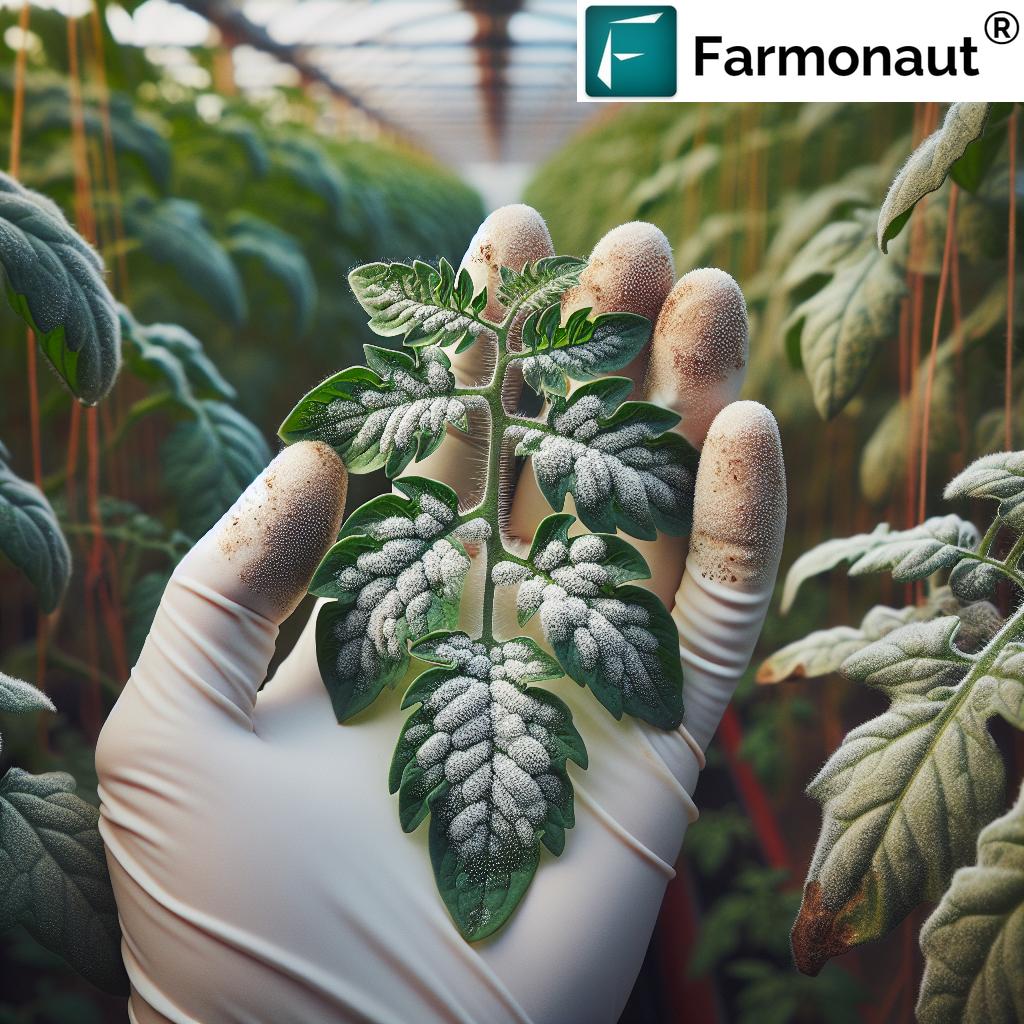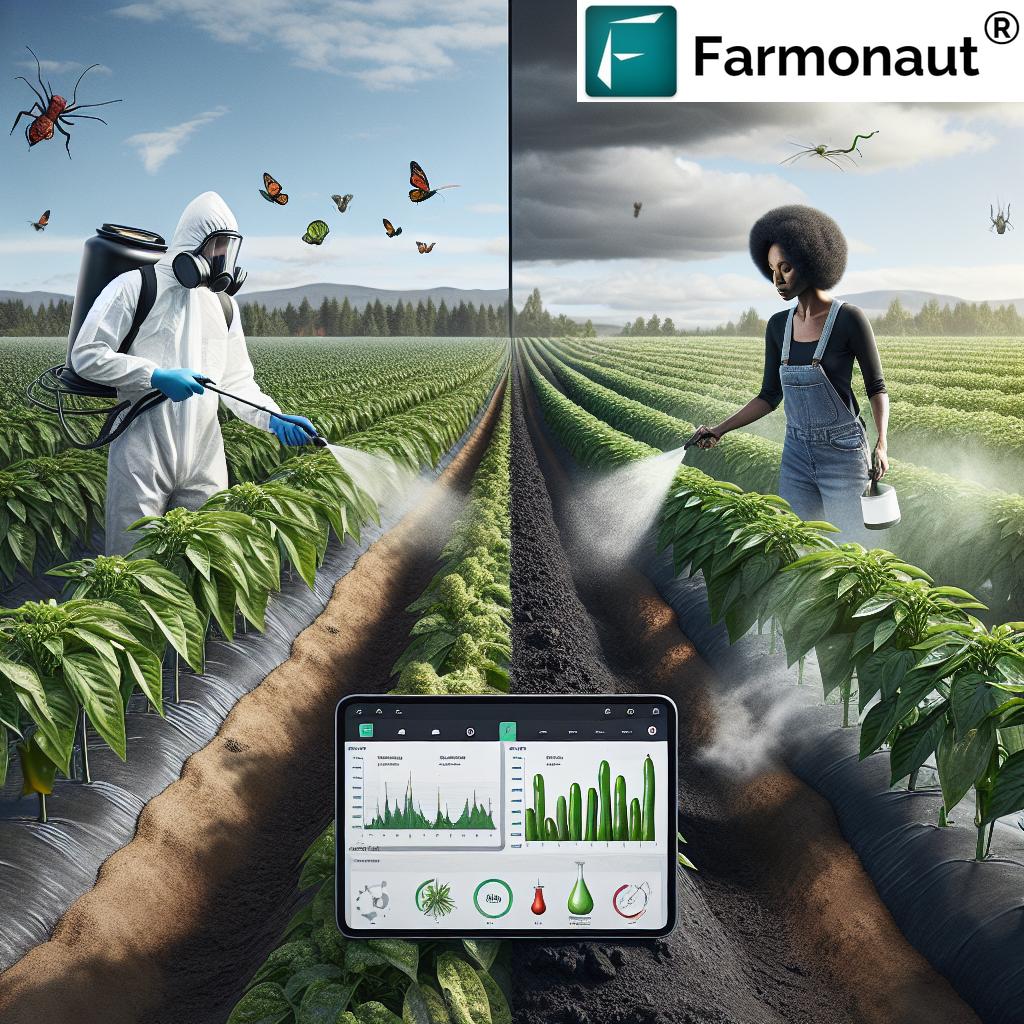Mastering Oïdium Control: Effective Strategies for Organic and Chemical Powdery Mildew Treatment in Crops

In the ever-evolving world of agriculture, farmers face numerous challenges in maintaining healthy and productive crops. One of the most persistent threats is powdery mildew, caused by the fungal pathogen Leveillula taurica, commonly known as Oïdium. This widespread plant disease affects a vast array of crops, posing significant risks to agricultural productivity and food security. In this comprehensive guide, we’ll explore effective strategies for organic and chemical powdery mildew treatment, empowering farmers with the knowledge to protect their harvests and optimize crop health.
“Oïdium (Leveillula taurica) can affect over 1000 plant species across 85 botanical families, making it a widespread agricultural threat.”
Understanding Oïdium and Its Impact on Crops
Oïdium, caused by Leveillula taurica, is a fungal disease that belongs to the powdery mildew family. This persistent pathogen affects a wide range of crops, including:
- Peppers
- Tomatoes
- Eggplants
- Cotton
- Onions
- Garlic
The disease thrives in warm climates with moderate humidity, making it a significant concern for farmers in many regions worldwide. Understanding the lifecycle and behavior of Oïdium is crucial for developing effective fungal disease management strategies in agriculture.
Symptoms and Impacts of Oïdium Infestation
Oïdium manifests as characteristic white or grayish powdery spots on the leaves, stems, and sometimes fruits of infected plants. As the infestation progresses, these symptoms can lead to:
- Reduced photosynthesis
- Stunted plant growth
- Premature leaf drop
- Decreased yield and fruit quality
Early detection and intervention are critical in managing Oïdium infections effectively. This is where advanced crop monitoring technologies can play a pivotal role.
Farmonaut’s satellite-based crop health monitoring system offers farmers a powerful tool for early disease detection. By leveraging multispectral satellite imagery, farmers can identify potential issues before they become visible to the naked eye, allowing for timely intervention and more effective disease management.
Organic Pest Control Strategies for Oïdium Management
For farmers seeking sustainable and environmentally friendly solutions, organic pest control for crops offers effective ways to manage Oïdium infestations. These methods focus on strengthening plant resilience and creating unfavorable conditions for fungal growth.
Cultural Practices for Plant Disease Prevention
Implementing proper cultural practices is the foundation of organic Oïdium control:
- Crop rotation to break disease cycles
- Proper plant spacing for improved air circulation
- Avoiding overhead irrigation to reduce leaf wetness
- Removing and destroying infected plant material
- Selecting resistant cultivars when available
These practices help create an environment less conducive to fungal growth and spread, forming the first line of defense against Oïdium.
Organic Treatments for Powdery Mildew
Several organic compounds have shown efficacy in controlling Oïdium:
- Sulfur (Soufre): A traditional fungicide that prevents spore germination
- Potassium bicarbonate: Alters pH on leaf surfaces, inhibiting fungal growth
- Neem oil: A natural fungicide with additional insecticidal properties
- Milk spray: Forms a protective film and may have antifungal properties
These organic treatments offer alternatives to conventional chemical fungicides, aligning with sustainable pest management practices in farming.
Chemical Approaches to Powdery Mildew Treatment
While organic methods are preferred for their environmental benefits, chemical powdery mildew treatment remains a crucial tool in managing severe Oïdium outbreaks. Modern fungicides offer targeted and effective control when used responsibly.
Types of Chemical Fungicides
Chemical fungicides for Oïdium control fall into several categories:
- Systemic fungicides: Absorbed by the plant, providing internal protection
- Contact fungicides: Form a protective barrier on plant surfaces
- Curative fungicides: Can treat existing infections
- Preventive fungicides: Applied before infection occurs
The choice of fungicide depends on the severity of the infection, crop type, and environmental conditions. It’s crucial to rotate between different modes of action to prevent fungicide resistance.
Application Methods and Timing
Effective fungicide application methods are key to successful Oïdium control:
- Ensure complete coverage of plant surfaces
- Apply during cooler parts of the day to minimize evaporation
- Follow recommended application intervals
- Adhere to pre-harvest intervals to ensure food safety
Precision in application timing and technique maximizes the effectiveness of chemical treatments while minimizing environmental impact.
“Proper fungicide application can reduce powdery mildew incidence by up to 90% in susceptible crops like peppers and tomatoes.”
Integrated Approach: Combining Organic and Chemical Strategies
The most effective powdery mildew treatment often involves an integrated approach, combining the best of organic and chemical methods. This strategy, known as Integrated Pest Management (IPM), offers a comprehensive solution to Oïdium control.
Benefits of an Integrated Approach
- Reduced reliance on chemical inputs
- Enhanced long-term sustainability
- Improved crop resilience
- Minimized risk of fungicide resistance
By leveraging both organic and chemical tools, farmers can create a robust defense against Oïdium while promoting overall crop health and environmental stewardship.

Leveraging Technology for Enhanced Oïdium Management
In the digital age, agritech solutions for crop health play a crucial role in effective Oïdium management. Advanced technologies offer farmers unprecedented insights into crop conditions, enabling more precise and timely interventions.
Satellite-Based Crop Monitoring
Farmonaut’s satellite-based crop monitoring system provides farmers with valuable tools for managing Oïdium and other crop health issues:
- Early detection of stress patterns indicative of disease onset
- Vegetation health indices to track crop vigor
- Historical data analysis for identifying disease-prone areas
By integrating these crop monitoring technologies into their management practices, farmers can take a proactive approach to Oïdium control, intervening before infestations become severe.
AI-Powered Advisory Systems
Farmonaut’s Jeevn AI advisory system takes crop management to the next level:
- Personalized recommendations based on crop conditions and environmental factors
- Predictive analytics for disease risk assessment
- Optimization of treatment timing and application methods
These AI-driven insights enable farmers to make data-informed decisions, enhancing the effectiveness of their Oïdium control strategies.
Environmental Factors Influencing Oïdium Development
Understanding the environmental conditions that favor Oïdium growth is crucial for effective management. Key factors include:
- Temperature: Optimal growth between 15-28°C (59-82°F)
- Humidity: Prefers moderate humidity levels (50-90%)
- Light: Thrives in shaded conditions
- Air circulation: Poor air movement promotes disease development
By monitoring these factors and adjusting cultural practices accordingly, farmers can create less favorable conditions for Oïdium proliferation.
Sustainable Pest Management in Farming
Sustainable pest management goes beyond immediate disease control, focusing on long-term ecological balance and crop resilience. Key principles include:
- Biodiversity promotion to support natural pest enemies
- Soil health management for stronger, more resistant plants
- Minimal use of broad-spectrum pesticides to preserve beneficial organisms
- Regular monitoring and adaptive management strategies
These practices contribute to a more resilient agricultural system, better equipped to withstand Oïdium and other pest pressures.
Comparison of Organic and Chemical Powdery Mildew Treatments
| Treatment Type | Active Ingredients | Effectiveness | Application Method | Environmental Impact | Cost Range (per acre) |
|---|---|---|---|---|---|
| Organic – Sulfur | Elemental sulfur | ★★★☆☆ | Dusting or wettable powder spray | Low | $10 – $30 |
| Organic – Neem Oil | Azadirachtin | ★★★☆☆ | Foliar spray | Low | $20 – $50 |
| Organic – Potassium Bicarbonate | KHCO3 | ★★★☆☆ | Foliar spray | Low | $15 – $40 |
| Chemical – Systemic Fungicide | e.g., Azoxystrobin | ★★★★☆ | Foliar spray or soil drench | Medium | $40 – $100 |
| Chemical – Contact Fungicide | e.g., Chlorothalonil | ★★★★☆ | Foliar spray | Medium | $30 – $80 |
This comparison highlights the trade-offs between organic and chemical treatments, emphasizing the importance of an integrated approach to Oïdium management.
Future Trends in Oïdium Control
As agricultural technology continues to advance, we anticipate several emerging trends in Oïdium management:
- Gene editing for enhanced crop resistance
- Biocontrol agents targeting Oïdium specifically
- Nanotechnology for more efficient fungicide delivery
- Machine learning algorithms for precision disease forecasting
These innovations promise to further refine our approach to powdery mildew treatment, offering more sustainable and effective solutions for farmers worldwide.
Conclusion: A Holistic Approach to Oïdium Management
Mastering Oïdium control requires a comprehensive understanding of the pathogen, its environmental preferences, and the array of treatment options available. By integrating organic and chemical strategies, leveraging advanced technologies, and adhering to sustainable farming practices, farmers can effectively manage powdery mildew while promoting long-term crop health and environmental stewardship.
Farmonaut’s suite of agricultural technologies offers valuable tools for enhancing Oïdium management strategies. From satellite-based crop monitoring to AI-powered advisory systems, these solutions empower farmers to make data-driven decisions, optimizing their approach to disease control and overall farm management.
As we continue to face agricultural challenges in a changing climate, the importance of innovative, sustainable approaches to pest and disease management cannot be overstated. By embracing a holistic, technology-enhanced strategy for Oïdium control, we can work towards a future of resilient, productive, and sustainable agriculture.
FAQs About Oïdium Control
- What is the best time to apply fungicides for Oïdium control?
The best time is early morning or late evening when temperatures are cooler and leaves are dry. This maximizes absorption and minimizes evaporation. - Can organic methods effectively control severe Oïdium infestations?
While organic methods can be effective for mild to moderate infestations, severe cases may require integrated approaches combining organic and chemical treatments for optimal control. - How often should I monitor my crops for signs of Oïdium?
Regular monitoring, at least twice a week during susceptible periods, is recommended. Farmonaut’s satellite monitoring can provide daily updates on crop health, enabling earlier detection. - Are there any crops that are naturally resistant to Oïdium?
While no crop is entirely immune, some varieties of tomatoes, peppers, and other susceptible crops have been bred for increased resistance to powdery mildew. - How can I reduce the risk of fungicide resistance in Oïdium management?
Rotate between fungicides with different modes of action, integrate non-chemical control methods, and avoid overuse of any single treatment to reduce the risk of resistance development.
For more information on how Farmonaut can support your crop management strategies, visit our API page or explore our API Developer Docs. Our comprehensive solutions are designed to empower farmers with the tools and insights needed for successful, sustainable agriculture in the face of challenges like Oïdium and other crop diseases.






